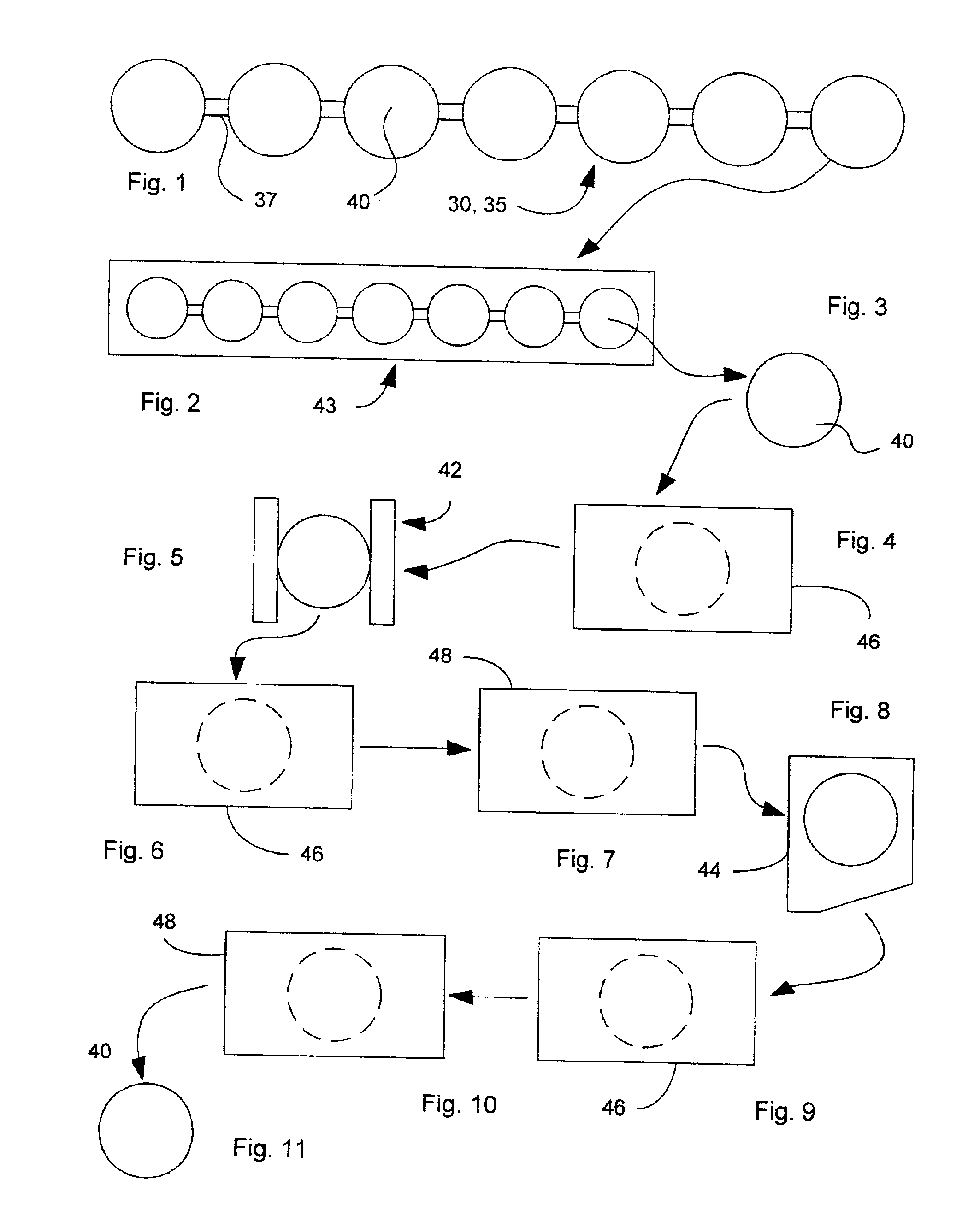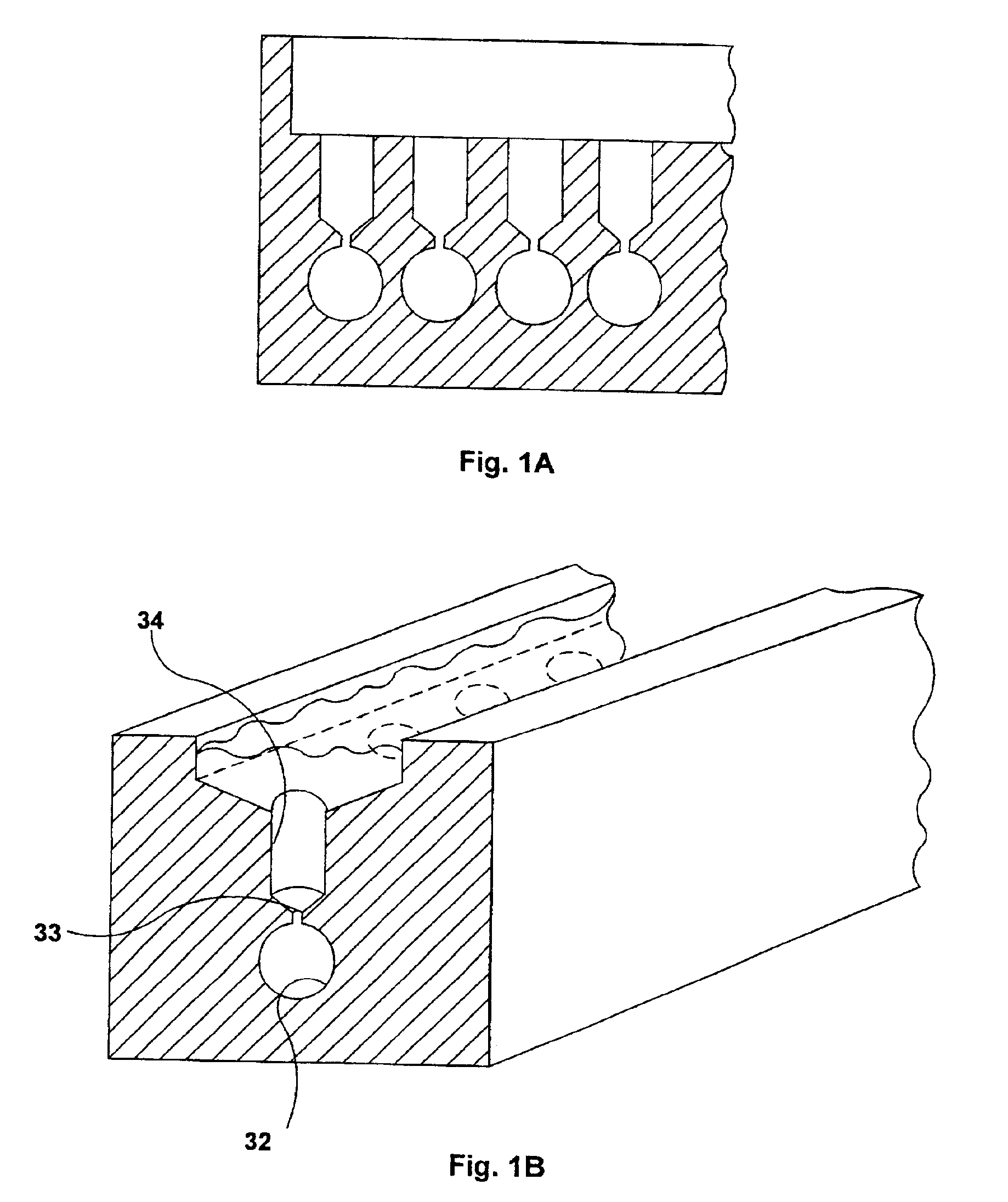Nitinol ball bearing element and process for making
a technology of nitinol ball bearings and elements, which is applied in the direction of grinding machines, manufacturing tools, mechanical equipment, etc., can solve the problems of corrosion poor damping capacity of conventional rolling element bearings, and notorious for a host of long-standing intractable problems, etc., to achieve better damping capacity, improve damping, and improve the effect of damping
- Summary
- Abstract
- Description
- Claims
- Application Information
AI Technical Summary
Benefits of technology
Problems solved by technology
Method used
Image
Examples
Embodiment Construction
[0050]Turning now to the drawings, wherein like reference characters designate identical or corresponding parts, and more particularly to FIGS. 1-7 thereof, a process for making Nitinol ball bearing elements, shown schematically in flow diagram form, uses an investment casting process in which a wax form 30 in the form of a “string of beads” is made or purchased as a separate item. The wax form 30 is suspended in a container, not shown, and the container is filled with a fine granular ceramic powder surrounding the wax form 30. The ceramic powder has a binder that binds the power into a mold when heated, after which the wax is melted and poured out of the mold, leaving only a ceramic mold with a “string-of-beads” hollow core.
[0051]The ceramic mold may be preheated in an evacuated heater container to prevent premature quenching and freezing of the molten Nitinol during casting. The molten Type 60 Nitinol, an intermetallic composition made of about 60% nickel and 40% titanium by weigh...
PUM
| Property | Measurement | Unit |
|---|---|---|
| temperature | aaaaa | aaaaa |
| melt temperature | aaaaa | aaaaa |
| temperature | aaaaa | aaaaa |
Abstract
Description
Claims
Application Information
 Login to View More
Login to View More - R&D
- Intellectual Property
- Life Sciences
- Materials
- Tech Scout
- Unparalleled Data Quality
- Higher Quality Content
- 60% Fewer Hallucinations
Browse by: Latest US Patents, China's latest patents, Technical Efficacy Thesaurus, Application Domain, Technology Topic, Popular Technical Reports.
© 2025 PatSnap. All rights reserved.Legal|Privacy policy|Modern Slavery Act Transparency Statement|Sitemap|About US| Contact US: help@patsnap.com



